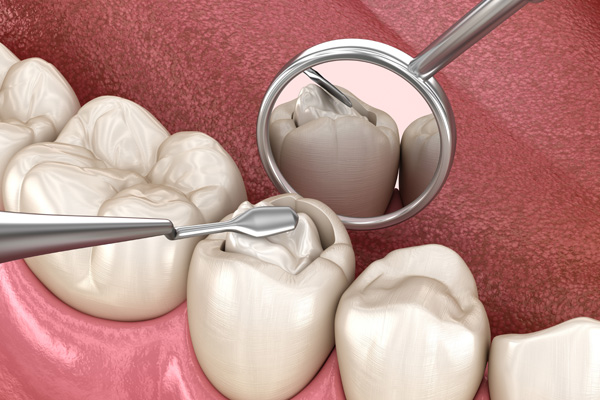 Tooth colored fillings are an important way that a patient can restore the functionality of the teeth while creating an aesthetically pleasing smile that leaves him or her happy with the dental work received. Composite fillings are becoming increasingly common, and it is important for patients to know whether the option may be right for them.
Tooth colored fillings are an important way that a patient can restore the functionality of the teeth while creating an aesthetically pleasing smile that leaves him or her happy with the dental work received. Composite fillings are becoming increasingly common, and it is important for patients to know whether the option may be right for them.
What are tooth colored fillings?
Composite resin fillings are the technical name for tooth colored fillings that are the same color as a patient's natural teeth. They can fill in small- to mid-size cavities and hold up well against the pressure of biting and chewing. Useful in both back and front teeth, composite fillings are common for those who want something that looks natural in the mouth.
How do composite fillings work?
Composite fillings, which are sometimes called resin-based composites, work by using special glue to bond them to the patient's remaining healthy tooth. Composite is also becoming increasingly popular over amalgam for filing in small cavities in the teeth.
What is the filling procedure?
Composite fillings may take a bit longer to place, but overall, the procedure for receiving them is very similar to receiving other types of fillings. First, the dentist looks at the patient's natural teeth to determine the right color match for the composite filling. Then, the cleaning process can begin. Sometimes, the bond will not be as effective on the natural teeth if they are not trimmed. This means that on occasion, the dentist will need to prepare the natural tooth for the filling by trimming parts of it. The trimming creates a strong base. The amount that needs to be trimmed is determined by how much decay there is.
After the natural tooth is prepared and any damage removed, the dentist will use a conditioner to complete the etching process. This process ensures that the surface of the tooth is able to bond well to the composite filling. Once applied, the bonding agent will need to harden to create a seal for completing the filling. The dentist usually shines a blue light known as a curing light onto the tooth for this process to happen. Once the initial bonding is complete, the dentist will add the composite in small layers, which helps to maintain a natural shape for the tooth. A light is used to cure the material between the application of each layer.
What are the advantages and disadvantages of composite fillings?
Like any dental procedure, composite resin fillings have advantages and disadvantages. On the plus side, composite fillings are quite durable and bond well to the natural tooth. In addition, because they are added in layers, they look more natural, match the other teeth more precisely, and provide an aesthetically pleasing look that many patients are proud to show off. On the downside, composite fillings are not suitable for people who have extensive dental damage and typically do not last as long as metal fillings. They also tend to be more expensive than metal due to the cosmetic nature of the filling.
Conclusion
If you think that tooth colored fillings may be the right match for your dental needs, talk to a dentist to learn more.
Request an appointment or call Paramount Dental Care & Specialty at 562-450-1261 for an appointment in our Long Beach office.
Related Posts
Dental cavities occur when plaque and bacteria in the mouth remain on the teeth, producing acids and weakening the enamel. Over time, this leads to small holes in the teeth that can grow larger if left untreated. While cavities are a common dental issue, they are also preventable with proper care. By following a few…
Composite fillings are resin materials made with a plastic and glass mixture. Dentists began to use tooth-colored fillings in the 1960s, but they were too weak for the back teeth. Nowadays, the composite resin is strong enough for all teeth. Dentists may use the fillings to restore a decayed tooth or reshape a disfigured, cracked,…
Dental patients with chipped or broken teeth have more options for tooth repair than in the past, such as the use of composite fillings. These fillings can not only restore a tooth but also prevent the need for extraction, which can leave gaps in the smile and cause the remaining teeth to shift. They can…
